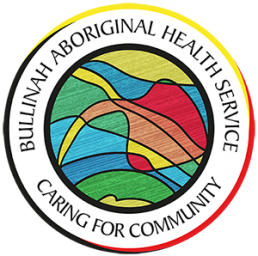AOD Position Statement
Alcohol & Other Drugs
Issue
The Aboriginal Community in the Ballina region is facing a huge issue with the treatment Alcohol and Other Drugs. It is well documented that the levels of substance misuse are significantly higher among Aboriginal Australians than among other Australians. These higher levels of misuse and related harm are socially determined and are both consequent and a cause of social and economic disadvantage.
Background
Bullinah Aboriginal Health Service was established in 2008 to provide ‘holistic’ comprehensive primary health care to over 2,210 Aboriginal People and their families residing in the Ballina, Byron Bay, Mullumbimby and Evans Heads regions. Bullinah currently has 17 full-time staff, 10 part-time and a number of contracted allied health professionals, who work in our multi-disciplinary team to provide services that capture health and social determinants, through a culturally appropriate lens. Currently, Bullinah has over 1,000 regular clients. The main objective of Bullinah is to work towards improving health outcomes of Aboriginal Peoples, collaboratively with other key stakeholders.
Bullinah is an AGPAL Accredited Health Facility, and is in the process of achieving AGPAL re-accreditation. We also envisage achieving accreditation against both QIC accreditation and Mental Health standards.
As the projected population of Aboriginal people is estimated to increase to 14,563 for the North Coast of NSW by 2020 investing in early intervention and preventive medicine makes good economic sense particularly in partnership with the Aboriginal Community Controlled Health Services, as outlined in the NSW Aboriginal Health Plan 2013-2023.
Meaningful partnerships with Aboriginal Community Controlled Health Services will be critical to effecting positive change. The Plan recognises the importance of strengthening partnerships with Aboriginal communities through the AH&MRC and, in particular, Aboriginal Community Controlled Health Services, which are widely acknowledged for their effectiveness in delivering comprehensive primary health care to Aboriginal people.
The Need
Bullinah would like to raise this significant issue with our key partners such as the Northern NSW Local Health District and the North Coast Primary Health Network, as this urgent issue needs more targeted approaches, through solution focused activities to address the high usage of alcohol and other drugs, which are having a detrimental effect on our Communities.
A collaborative working group should be tasked to develop a jointly agreed plan that is consistent with the Ministry of Health’s Aboriginal Health Plan 2013-2023.
National Snapshot Information
- 1 in 10 young Aboriginal people use methamphetamine compared to 1 in 20 young non-Aboriginal people;
- Of young Aboriginal People who use methamphetamine 1 in 2 use daily or weekly compared to 1 in 10 non Aboriginal people
- Numbers of Aboriginal people in prisons have doubled in the last 10 years, almost all have drug dependence and this worsens after imprisonment;
- Health providers in Aboriginal Community Controlled Health Services request in regard to alcohol and other drug treatments:
- Professional development
- Improved partnerships and
- More timely access to detox and rehabilitation;
- Aboriginal families request improved support and skills in dealing with their family members who are alcohol and other drug dependent;
- Little evidence of effectiveness of methamphetamine health education and prevention programs that work with Aboriginal people;
- Little evidence about effectiveness of drug and alcohol treatment with Aboriginal people;
- Concern that ‘moral panic’ about ICE, such as, ICE forums may further marginalise and deter methamphetamine users from help seeking behaviour and
- More targeted and solution focused activities are required to combat the overuse of alcohol and other drugs amongst Aboriginal People.
Primary Prevention AoD Strategies include:
- Preventing exposure and/or access to drugs;
- Preventing initiation of drug use;
- Delaying uptake of all drug use (later age of start decreases likelihood of problem use);
- Preventing regular use (beyond experimentation).
Secondary Prevention AoD Strategies include:
Preventing harm associated with a single episode of use (risky for short-term harm)
- Preventing harm associated with a single episode of use (risky for short-term harm) which might be related to the amount use; the was in which the drug is used or its route of administration, the circumstances of use, including the location, social setting and related activities; and concurrent use of other dugs or other risky behaviours (e.g. driving while intoxicated, having unprotected sex);
- Preventing regular heavy use (risky for long‐term harm).
Tertiary Prevention AoD Strategies include:
- Preventing dependent use;
- Preventing longer‐term, drug-related illness, crime, social and behavioural problems, or death among those who continue to use;
- Preventing harm to others;
- Preventing the drug use of a person causing harm to others, including partners, children, friends, colleagues, and the broader community.
Recommendations
That Bullinah Aboriginal Health Service, Northern NSW Local Health District and the North Coast Primary Health Network work collaboratively to:
- Improve understanding of the effectiveness of treatment processes and treatment outcomes for Aboriginal people with alcohol and other drug dependence;
- Increase diversionary options from the Justice System to Drug Treatment and Mental Health support;
- Strengthen Bullinah to deliver evidenced based harm reduction approaches suited to local community needs;
- Strengthen Bullinah to provide evidenced based alcohol and other drug dependence treatment suited to local Aboriginal community needs;
- Improve access to alcohol and other drug treatments, including timeliness to detoxification and rehabilitation that address specific needs, for example, longer detoxification periods;
- Assess sustainable and systematic service provision that meets client need.
